#Chevrolet specs
Explore tagged Tumblr posts
Text

2025 Chevrolet Tahoe: Significant Update
The 2025 Chevrolet Tahoe receives significant updates, solidifying its position as one of the best full-size SUVs available. With improved technology, a more refined interior, and better overall performance, the Tahoe is perfect for those who need space and power.
The 2025 Chevrolet Tahoe is a full-size SUV that has undergone significant updates for the 2025 model year. Known for its spacious interior, robust performance, and high towing capacity, the Tahoe continues to be a top choice for families and those needing a powerful vehicle for heavy-duty tasks.
Technical Specifications
Engine: 5.3L V8
Horsepower: 355 hp
Torque: 383 lb-ft
Fuel Economy: 16 MPG city / 22 MPG highway
Transmission: 10-speed automatic
Key Features
Enhanced suspension system for a smoother ride
Larger touchscreen with advanced connectivity options
Premium interior materials and finishes
Improved towing capacity
Pros and Cons
Pros:
Powerful V8 engine
Spacious and luxurious interior
Excellent towing capability
Cons:
Poor fuel economy
Large sizes can be difficult to maneuver
#2025 Chevrolet Blazer#2025 Chevrolet SUV#2025 Chevrolet vehicles#2025 SUV updates#Chevrolet Equinox 2025#Chevrolet Suburban 2025#Chevrolet SUV lineup#Chevrolet Tahoe 2025#Chevrolet Trax 2025#Pros and cons Chevrolet SUVs#SUV technical specs
0 notes
Text
Troubleshooting The F14d3 Engine: Solutions For Common Problems!
The F14d3 engine is one of the most popular and reliable engines in the market. It is used in various models of cars, trucks, and buses. However, like any other engine, it can also face some common problems that can affect its performance and efficiency. In this article, we will discuss some of the most common problems that the F14d3 engine can encounter, and how to troubleshoot them…
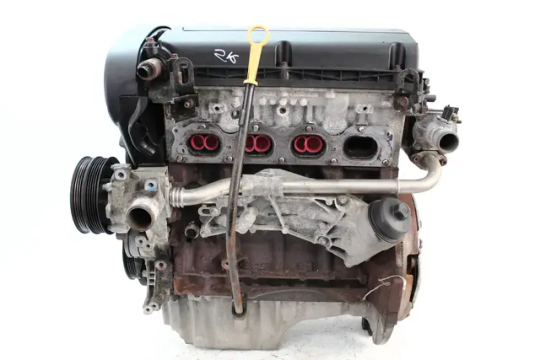
View On WordPress
#Chevrolet engine#Compression test#crankcase ventilation#EGR system#engine price#Engine Problems#Engine Reliability#engine solutions#engine specs#engine tuning#F14d3 engine#faulty thermostat#Fuel pressure#ignition system#loose closing valves#Oil Leaks#spark plugs#timing belt#turbocharger#valve clearance
0 notes
Text



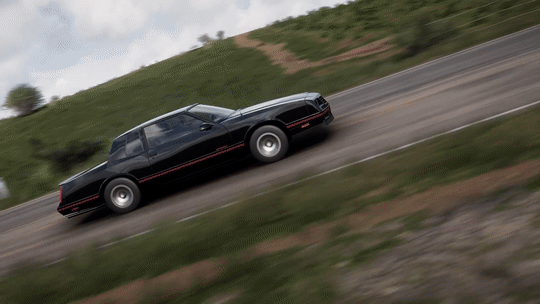











#forza horizon 5#nissan skyline gt-r v-spec ii#chevrolet monte carlo super sport#bentley continental supersports#ford performance bronco r#ferrari 599xx#forza#forzaedit#forza horizon#caredit#gamingedit#gameedit#videogameedit#gif#gifs
1 note
·
View note
Text
THE RACER!JJK MULTIVERSE ˙⊹༺
“ask any racer — any real racer. it don’t matter if you win by an inch or a mile. winning’s winning.”

I. THE INTRODUCTION — JJK MEN AND THEIR CARS now, of course we can’t start this off by not introducing their rides! below are the cars that i’ve chosen for the boys, although they might not be as accurate in vibe or looks. this is all in good fun!
☆ gojo’s 1999 Nissan Skyline R34
☆ geto’s 1997 Mazda RX-7 Veilside Fortune
☆ nanami’s 1968 Dodge Charger
☆ toji’s 1969 Chevrolet Corvette Sting Ray
☆ sukuna’s 1966 Ford GT40 Chassis P/1046
☆ megumi’s 2001 Nissan Silvia S15 Spec-S

II. YOUR RELATIONSHIP it’s the 2000s and the height of illegal street racing is at its peak. amongst the frequents racers and spectators, there’s always a few that stand out with their upgraded NOS’s and sleek paint jobs, but more so because of their unmatched aura. it’s just that you never thought you’d be at the centre of it all, too, smiling over at your little racer boy from the passenger seat ♡
GO! / warnings: essentially car sex & pet names & unprotected sex for everything, fingering, clit stimulation, praise, public sex, geto listens in on a call, riding, implied p → v penetration, implied creampie / breeding, implied threesome w/ stsg (gojo), clit stimulation, handjob, semi-public sex, p → v penetration, doggy, geto asks and then takes a pic of you, creampie / breeding (geto), praise, oral (f receiving), fingering, pleasure dom nanami, squirting, clit stimulation (nanami), age gap (reader’s early 20s, toji is forty), oral (m receiving) while driving, facefucking, semi-public sex, clit stimulation, daddy kink, implied p → v penetration (toji)
REWARDS FROM A RACER / sukuna joins the fray! / warnings: ooc sukuna, dom!sukuna, lewd declarations in public, he’s a little mean and calls you ‘whore’, ‘slut’, praise, degradation, pet names, car sex, semi-public sex, oral (m! receiving), light face-fucking, unprotected sex, riding, p → v penetration, clit stimulation, dash of daddy kink, creampie / breeding kink
LATE NIGHT DRIFT / megumi joins as well! / warnings: general, fluff
LLOROMANNIC / elaboration on racer!geto! / warnings: virginity loss, soft dom!geto, geto really really is obsessed w/ you, oral / cunnilingus (eats pussy like this! like i really don’t know what this position’s called), pet names, slight nipple play, clit stimulation, fingering, slight size kink, p -> v penetration, protected sex

III. HOW DID YOU MEET? maybe you already knew the other, or maybe you didn’t, but either way you didn’t know fate had plans in store for you when you stumble across the racer, twined together by crankshafts and other... suggestive things!
first meeting / warnings: general, some fluff, suggestive in nanami’s drabble

IV. RELATED WORK perhaps you met them in a different way, or things didn’t work out — below are an assortment of fics that dictate a different way your life with our racer boys may have went. you could say it’s works that are canon-divergent!
alternate! how did you meet? / warnings: general, shitty boyfriend, some crude language on toji’s part
flag girl!reader series / a work in progress!
#i had this in my drafts for soooo long#i might as well just post it man 😭😭#jujutsu kaisen x reader#jjk x reader#jjk#jujutsu kaisen#gojo x reader#gojo smut#gojo satoru smut#nanami smut#nanami kento x reader#nanami x you#getou suguru smut#suguru geto smut#geto smut#geto suguru x you#geto fluff#toji fushiguro smut#toji smut#toji x you#jjk toji#gojou satoru x reader#gojo fluff#geto suguru x reader#nanami kento smut#fushiguro toji x reader#jujutsu kaisen smut#jjk smut#geto x reader#fushiguro toji smut
717 notes
·
View notes
Text
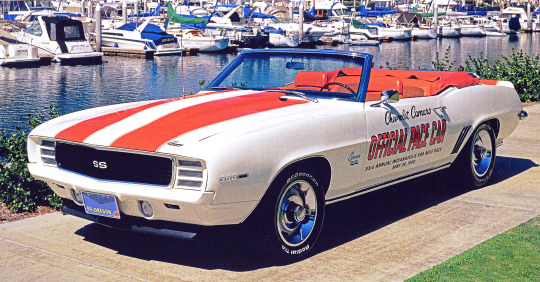

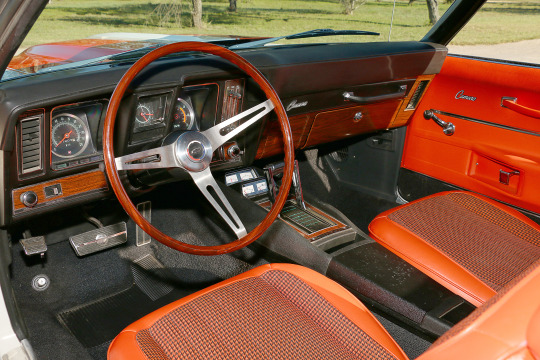


Chevrolet Camaro Indy Pace Car Edition, 1969. General Motors built 3 actual pace cars and and edition of 150 replicas based on both RS and SS spec models
#Chevrolet#Chevrolet Camaro Indy Pace Car Edition#Chevrolet Camaro#Indy Pace Car#1969#replica#special edition#limited edition#first generation#Camaro#open roof#convertible
201 notes
·
View notes
Text


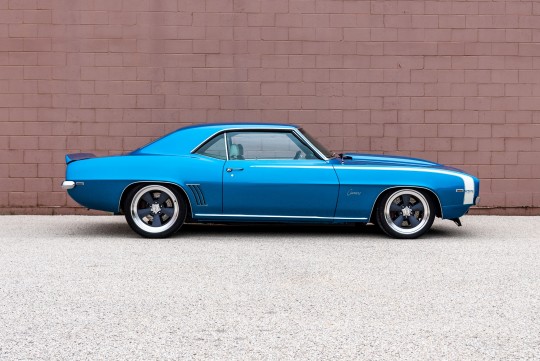
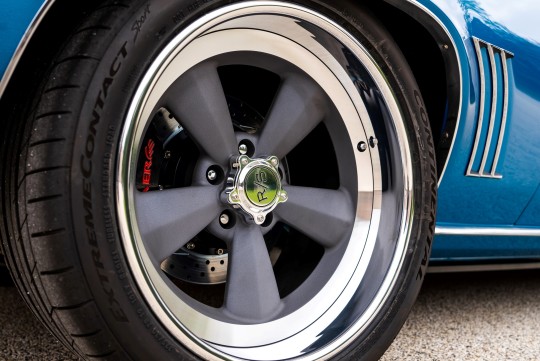
Quintessential American muscle. Barron's Lemans Blue "Survivor Series" 1969 Chevrolet Camaro was built by the team at Roadster Shop. It's powered by a Chevrolet Performance 383ci stroker mated to a Tremec TKX 5-speed manual transmission and rides on a Roadster Shop SPEC chassis, Baer brakes, 235/40R18 & 325/30R19 Continental Extreme Contact Sport tires, and 18x8/19x11 Forgeline forged three piece RS5 wheels finished with Tankard Gray centers, Polished outers, and Roadster Shop's own custom "R/S" Flat Cap center caps! See more at: https://www.forgeline.com/customer-gallery-barron-gira/cgk2688
🇺🇸🇺🇸🇺🇸
#forgeline#forgelinewheels#forgedwheels#customwheels#RS5#ForgelineRS5#notjustanotherprettywheel#doyourhomework#madeinUSA#protouring#Chevrolet#Chevy#Camaro#69Camaro#roadstershop#survivorseries
124 notes
·
View notes
Text



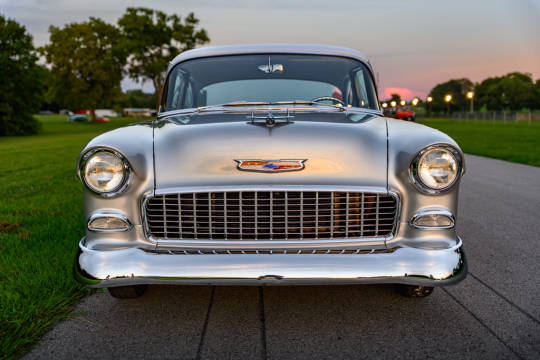
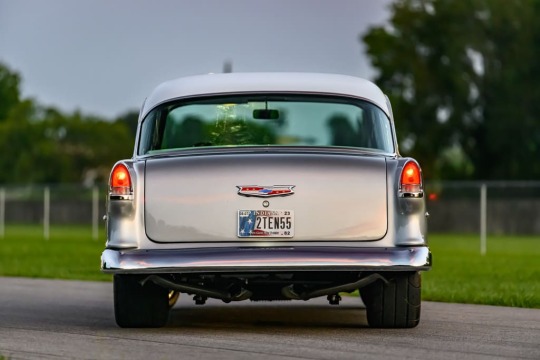
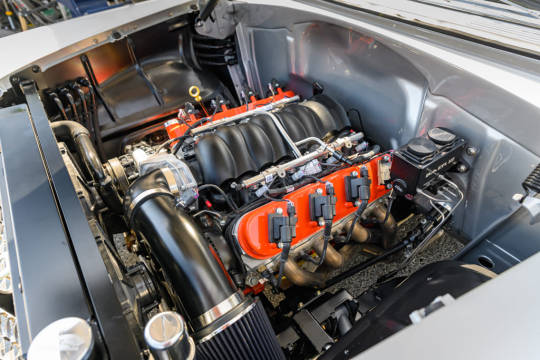
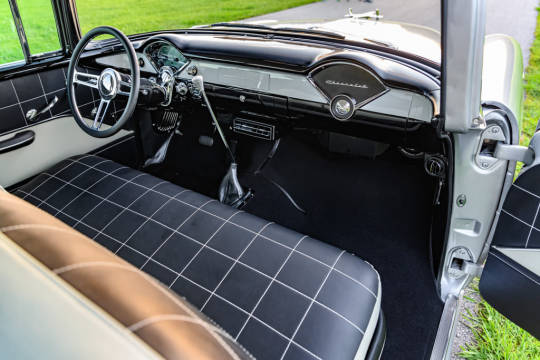

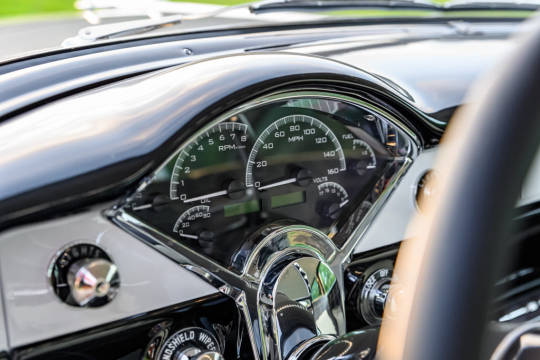


1955 Chevrolet 210
TECH CHECK Owner: Eric Mead, Evansville, Indiana Vehicle: ’55 Chevrolet 210
Engine Type: BluePrint Engines Chevrolet LS3 Displacement: 376 ci Compression Ratio: 10.7:1 Bore: 4.070 inches Stroke: 3.622 inches Cylinder Heads: BluePrint Engines aluminum Camshaft: BluePrint Engines hydraulic roller (0.612/0.585-inch lift, 225/238 deg. duration) Ignition: E38 Engine PCM Assembly: BluePrint Engines Exhaust: Church Boys Racing by Stainless Works 1-7/8-inch primaries to 3-inch collector and 2.5-inch stainless pipes bent by Dave Favor’s Performance Exhaust, MagnaFlow Mufflers Ancillaries: Holley mid-mount accessory drive, PRC radiator and core support, SPAL Fans Output: 530 hp at 6,100 rpm, 508 lb-ft at 5,200 rpm
Drivetrain Transmission: ’99 GM 4L80E Automatic with TransGo valvebody kit prepared by Wathen’s Transmission (Owensboro, KY) Torque Converter: FTI Billet 3,200 stall Driveshaft: Driveline Plus Rear Axle: Strange Engineering 9-inch with Truetrac differential, 3.70 gears, 35-spline axles
Chassis Chassis: Roadster Shop SPEC Front Suspension: Strange single-adjustable coilovers, stabilizer bar Rear Suspension: Strange single-adjustable coilovers, parallel four-link, Panhard bar Brakes: Baer four-wheel disc, 12-inch front rotors with four-piston calipers, 11-inch rear rotors with four-piston calipers, Baer Remaster master cylinder
Wheels & Tires Wheels: Bogart Racing Wheels D-5; 17×4.5 front with 2.25-inch backspace, 15×10 rear with 5.5-inch backspace Tires: Mickey Thompson Sportsman S/R front, 26×6.00R17; Mickey Thompson ET Street S/S rear, 295/55R15
Interior Upholstery: Holtsclaw Custom Upholstery (Francisco, IN) Carpet: Cars Inc. black loop carpet Seats: Original bench seat with black-and-white vinyl Delray pattern Steering: Summit steering column with Eddie Motorsports steering wheel Shifter: Lokar Dash: Original Instrumentation: Dakota Digital VHX HVAC: Vintage Air Wiring: American Autowire by Andy’s Hot Rod Shop (Mulkeytown, IL)
Exterior Bodywork and Paint: Reisinger Custom Rebuilding (Evansville, IN) and Andy’s Hot Rod Shop Paint: Sateen Silver/white by James Smith of Road Runner Restorations (Johnston City, IL) Hood: Stock Grille: Danchuk Bumpers: Danchuk Glass: Auto City Classics Fuel Tank: 15.5-gallon Tanks Inc. galvanized powedercoated silver
105 notes
·
View notes
Text

Don Yenko took a daring step by converting the Chevrolet Corvair into a focused race car. The Stage III package brought significant engine modifications and weight savings, creating a dedicated SCCA competitor that left plenty of skeptics in its rearview mirror.
Power Where It Counts
At the heart of the Stage III is a souped-up flat-six engine, reworked with high-compression cylinder heads, upgraded carburetors, and a performance exhaust system. These tweaks pushed horsepower well beyond stock specs, giving this road racer a potent blend of torque and rev-happy excitement.
Handling and Balance
With the engine mounted in the rear, the Corvair always had a different feel from front-engine cars. Don Yenko further refined the suspension and chassis, sharpening the car’s cornering precision. This combination became a secret weapon on tight SCCA circuits, surprising drivers who expected the usual muscle-car approach.
Bold Identity
A Stage III Stinger stands out with signature stripes and Yenko badging that adds to its race-ready look. The unique vents and scoops lend a purposeful air, hinting at the performance upgrades beneath the sheet metal.
Collector’s Prize
Low production numbers mean spotting a real Stage III can feel like finding a hidden piece of automotive history. Many have been carefully preserved by enthusiasts who know how rare these machines are. Owning one provides a direct link to Don Yenko’s daring ingenuity and the era’s thrilling spirit of competition.
4 notes
·
View notes
Text

With the reclassification of GT racers ahead of the 2024 season, TF Sport works on tuning their new N°81 Chevrolet Corvette Z06 GT3.R for the LM-GT3 spec of the World Endurance Championship at Dubai Autodrome UAE.
#chevrolet corvette z06 gt3.r#world endurance championship#tf sport#dubai autodrome#fiawec#2024 fiawec#lmgt3#chevy corvette
11 notes
·
View notes
Text
The Vehicles Han Drove/Owned
Fast & Furious - 1967 Chevrolet C-10

Fast Five - 1971 Ford Maverick

Fast Five - 2011 Subaru Impreza WRX STI

Fast Five - Dodge Charger Police Cruiser

Fast Five - 2011 Lexus LFA Fast

Fast & Furious 6 - 2010 BMW M5 E60

Fast & Furious 6 - 2013 Harley Davidson XR 1200 X

Fast & Furious 6 - Dodge Charger SRT-8

Tokyo Drift - 2001 Nissan Silvia S15 Spec-S

Tokyo Drift - 1997 Mazda RX-7 FD

F9: The Fast Saga - 2020 Toyota Supra

Fast X - 1974 Alfa Romeo 2000 GT

Others seen in his garage in Tokyo Drift (not including the green one)
He gave Sean the 2006 Mitsubishi Lancer Evolution IX





#han lue#han seoul oh#fast and furious#fast & furious#cars#car porn#the fast and the furious tokyo drift#fast and furious tokyo drift#tokyo drift#fast five#fast & furious 6#fast and furious 6#f9#f9 the fast saga#fast and furious 9#fast x#fast and furious 10#motorcycles#car#motorcycle#fast and furious 4
5 notes
·
View notes
Text

2025 Chevrolet Blazer EV: Minor Update
The 2025 Blazer EV receives minor updates, making it even more appealing to electric vehicle enthusiasts. With a balance of power, range, and style, the Blazer EV is a strong contender in the electric SUV market.
The 2025 Chevrolet Blazer EV is an exciting addition to Chevrolet’s electric vehicle lineup, combining style, performance, and modern technology. With its sleek design and advanced features, it stands out in the competitive electric SUV market. Here’s a comprehensive look at what the 2025 Blazer EV has to offer.
Technical Specifications
Battery: 90 kWh Lithium-ion
Range: 320 miles per charge
Horsepower: 290 hp
Torque: 340 lb-ft
Charging Time: 8.5 hours with Level 2 charger
Key Features
Enhanced regenerative braking system
New interior finishes for a premium feel
Updated driver assistance features
Advanced connectivity options
Pros and Cons
Pros:
Strong performance for an EV
Long driving range
Premium interior
Cons:
Higher price point
Limited cargo space compared to gas-powered Blazer
#Chevrolet Suburban 2025#Chevrolet SUV lineup#Chevrolet Tahoe 2025#Chevrolet Trax 2025#Pros and cons Chevrolet SUVs#SUV technical specs
0 notes
Note
Hi Hazel,
I hope you are the right person to ask about this. So the way I understand it, in formula e, formula 2 and indycar all the teams have basically the same car, but it's still very clear that some teams are better than others. What are the teams actually changing to make that difference? I know that indy has two different engines but there has to be more to it. Can you change everything except for the chassis in fe? What is up with f2/f3? Idk this really confuses me from series to series.
no worries, it is confusing tbh.
so all the series you've mentioned have a spec chassis, which means every car looks the same. it has the same parts, from the same supplier. in Formula 2 and 3 it also has the same engine, again all from a single supplier (Mechachrome).
F2 and 3 are supplied a biofuel mix by Aramco (as of this year), IndyCar is fuelled by a biofuel made by Shell and all of Formula E use the same Williams Advanced Engineering battery. so it's not like F1 teams where every garage has a different fluids supplier.
Formula 2 and 3 teams can then change the setup of the car. that's sometimes very important for maintaining a good balance; it's why having an experienced team or a driver with good setup knowledge can make a huge difference and why some ultra-rich drivers like Amaury Cordeel pay for their teammate to share setup and essentially do the work for both cars. that's stuff like front and rear wing angle, ride stiffness, etc.
in Formula E teams can then make certain parts of the car themselves (brake ducts, for instance) and there is also a range of powertrain suppliers. initially, the Porsche powertrain looked unbeatable this season because it had the best race efficiency, whereas that seems to have swung the way of the Jaguar powered cars towards this late stage. the powertrain and the teams management of it make a very big difference to the efficiency of the car. you can also make small tweaks to the physical setup of the car but in FE they're not massively major just because there's no real aero to adjust (FE cars have less downforce than a GT car) only things like tiny increments of ride height and stuff - the overall efficiency is much more important.
in IndyCar there's a common chassis and then Honda and Chevrolet are the engine suppliers. sometimes it's clear that one or the other has the upper hand in terms of outright or sustained speed (so it's pretty noticeable in some years at the Indy 500) but teams can also make substantial setup changes that will vary how quick they are or the way the car behaves. this is a good article about the aerokit options available for IndyCar teams this year.
so, in terms of mechanical or technical things they can change, there is some stuff across all the series and in Formula E or IndyCar it's quite a wide range.
then there's what I'd broadly call operational factors. this is basically how good is the team at competing in their respective series.
that can come down to how well the cars are prepared for and looked after over a race weekend - generally, bigger budget teams will have more mechanics available to work on the cars and so be able to give them more attention. no garage is slacking but if you have more resources, better analytics tools, more option to change parts, etc then you will have an advantage. drivers also pay for parts across the year, so things like crash damage and wear-and-tear might mean that they're re-using parts if they're on a budget that they're replace, if they had infinite funds.
something that's affected all the series recently is the supply chain problems that Dallara (which makes the F2/3 and IndyCar chassis) and Spark (which is a subsidiary of Dallara that makes electric racecars, in FE and XE) has had. so there has been a lack of spare parts at various points across the board and FE currently has a severe lack of Gen3 parts - not at all helped by the carnage in Rome.
then there's how well the teams work with the drivers. how much data processing power they have, how good their performance engineers (the people who translate data to the drivers, basically) are and how well the team can execute strategies. in F2 or IndyCar that can include being slick at pit stops and knowing when to call them but there's also other factors.
take qualifying in F2 and 3, for instance. F2/3 cars use the F1 pit lane, with temporary pits set up in the bays outside the garages (basically where F1 teams do a pit stop) but they can't get inside the garages. which means that they are not allowed to refuel once the car has left the support series paddock, since refuelling is only allowed in garages.
for qualifying you want to run low fuel but also give yourself enough options to get a few runs in. if the track turns out to develop super quickly towards the end but you don't have the fuel to go out again, you'll lose out on position - this happened a weird amount with Prema last year, in F2, even though they're normally one of the best teams, operationally.
and there's lots of little things like that. understanding the tyres so you can get them up to temperature the best, knowing what calls to make if it rains, having the experience and confidence to do that even in series where, since they're literally for training, the drivers don't.
in IndyCar the strategy is super complicated because there's tyres and also fuel and obviously you want to get over the line having spent the least amount of time in the pits but that's going to take being clever and as in all sports a little bit lucky. then there's also the role of the spotter, which is basically to be the opposite of the Ferrari pit wall by accurately and promptly telling the driver about everything happening around them on track. it's not an engineering role, more purely about that sporting awareness and communication - F1 could prob learn.
in FE things are slightly different because FE is slightly different (no different tyre compounds, no pit stops, etc) but basically the teams that can correlated simulator data to put together the best on-track package will be in the lead. and if the mechanics can stay up all night fixing a car from the ground up and still be on it enough to fully prepare both cars the next day then hell, they're the best in the business.
so lots of factors affect how the car performs. generally the biggest constraint for teams is budget because money can fix a lot of the other problems but experience is the next hurdle. Sacha Fenestraz was talking quite a lot about how his engineering team in Nissan is all quite new to Formula E and how much they've had to learn together during the rookie practice on Friday.
19 notes
·
View notes
Text
2 notes
·
View notes
Text
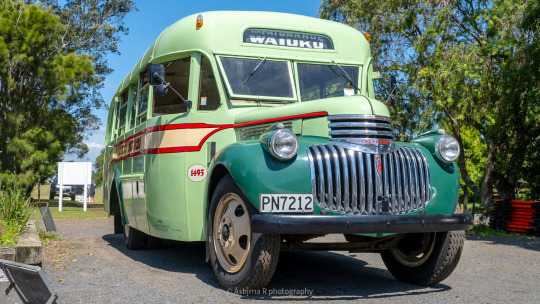
New Zealand Railways Road Services №1493 [Chevrolet MS/NZMB] seen at Glenbrook Vintage Railway during the 2024 vintage harvest fest.
New to NZRRS in 1947, these 17 seater Chevy's did not last long in NZRRS service. They were replaced by Leylands and Macks. This particular coach spec Chevy was preserved by the Chevrolet Enthusiasts Club.
Other than a service car whose whereabouts and status are unknown, this is the oldest NZRRS bus in preservation. The National Railway Museum of NZ also has a much younger Bedford SB3/NZMB №3583 in preservation.
If you want to support my work click here, to buy this photo.
5 notes
·
View notes
Text
The 2025 Chevrolet Corvette ZR1 is expected to be the most powerful and dominant Corvette ever, boasting an 850 horsepower V8 engine with over 800 lb-ft of torque.
~ Amal Shaw, HotCars.com
•
A V8 Journey, from Roadsters to SuperCars.
~ Michael McCrea, Corvette SuperCars
•
#C8 #Corvette #ZR1 #TwinTurbo #V8 #AWD #Hybrid #CorvetteSuperCars #Worldwide #Tour #LeftHand #RightHand #WorldCar #HellYa #RoadstersToSuperCars
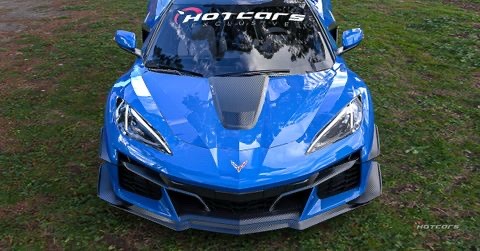



#corvette#corvettesupercars#stingray#c8#widebody#c1#c2#c3#C4#c5#C6#c7#ZR1#TwinTurbo#AWD#SuperCars#WorldCar
4 notes
·
View notes
Photo

New Post has been published on https://fastmusclecar.com/unleashing-the-power-chevrolet-camaro-z28-5th-generation-specs/muscle-cars/
Unleashing the Power: Chevrolet Camaro Z28 5th Generation Specs
The Chevrolet Camaro is an iconic American muscle car that has been a favorite among car enthusiasts since its debut in 1966. The fifth generation Camaro, which ran from 2010 to 2015, was no exception. Among the models available in this generation, the Camaro Z28 stands out for its impressive specs and performance. In this article, we’ll take a closer look at the Chevrolet Camaro Z28 5th generation specs and what makes it a true powerhouse on the road.
Introduction
The Chevrolet Camaro Z28 5th generation is a high-performance version of the Camaro that was introduced in 2014. It was designed to be the ultimate track-ready Camaro, with a focus on performance and handling. The Z28 is powered by a 7.0-liter LS7 V8 engine, which produces 505 horsepower and 481 lb-ft of torque.
Engine and Performance
The LS7 engine is one of the most powerful naturally aspirated engines ever put in a Camaro. It is based on the engine used in the Corvette Z06, but has been modified for the Camaro. The engine is paired with a six-speed manual transmission, which is the only transmission available for the Z28.
The Camaro Z28 also comes with a number of performance features that make it stand out from other Camaros. It has a special track-tuned suspension, with unique springs, dampers, and anti-roll bars. It also has lightweight wheels and brakes, which help to reduce the car’s weight and improve its handling.
The Z28’s performance is truly impressive. It can go from 0 to 60 mph in just 4.4 seconds, and has a top speed of 184 mph. It can also stop from 60 mph in just 107 feet, thanks to its high-performance brakes.
Exterior Design
The Camaro Z28 has a distinctive exterior design that sets it apart from other Camaros. It has a more aggressive front fascia, with a larger grille and a unique hood that features a functional air extractor. The car also has a rear spoiler and a special rear diffuser, which help to improve its aerodynamics.
One of the most unique features of the Z28’s exterior design is its wheels. The car comes with lightweight 19-inch forged aluminum wheels, which are wrapped in high-performance Pirelli PZero Trofeo R tires. These tires are designed to provide maximum grip on the track, and are some of the most advanced tires available for any car.
Interior Design
The interior of the Camaro Z28 is designed with performance in mind. It has Recaro sport seats, which provide excellent support during high-speed maneuvers. The seats are also covered in microfiber suede, which helps to keep the driver and passengers in place during hard cornering.
The Z28’s interior also has a number of other performance-oriented features. It has a flat-bottom steering wheel, which provides better grip and control during spirited driving. The car also has a special performance data recorder, which allows drivers to track their lap times and other performance metrics.
Price and Availability
The Camaro Z28 was only produced for the 2014 and 2015 model years, and was a limited-production model. As a result, it is now a rare and highly sought-after car among collectors and enthusiasts.
When it was first released, the Camaro Z28 had a starting price of around $75,000. Today, a well-maintained Z28 can fetch prices upwards of $50,000 on the used car market.
Conclusion
The Chevrolet Camaro Z28 5th generation is a true powerhouse on the road, with impressive specs and a design that is focused on performance. The LS7 engine is one of the most powerful ever put in a Camaro, and is paired with a track-tuned suspension, lightweight wheels and brakes, and high-performance tires to create a car that is built for the racetrack.
The Z28’s unique exterior and interior design features further set it apart from other Camaros, with a distinctive look that is both aggressive and functional. And while the Z28 was only produced for a limited time, its status as a collector’s item only adds to its appeal.
Overall, the Chevrolet Camaro Z28 5th generation is a car that truly unleashes the power of American muscle, and continues to be a favorite among car enthusiasts to this day.
FAQs
can we use Chevrolet Camaro Z28 5th generation for towing with fifth wheel
No, the Chevrolet Camaro Z28 5th generation is not suitable for towing with a fifth wheel hitch. This high-performance sports car is designed for speed and agility on the racetrack, and is not equipped with the necessary components for towing heavy loads. Towing with a fifth wheel hitch requires a vehicle with a specialized towing package, which typically includes a heavy-duty frame, suspension, and braking system, as well as a powerful engine and transmission designed for towing. If you need a vehicle for towing with a fifth wheel hitch, it is best to look for a truck or SUV that is specifically designed for that purpose.
What is the top speed of the Chevrolet Camaro Z28 5th generation?
The top speed of the Chevrolet Camaro Z28 5th generation is 184 mph.
What is the horsepower of the LS7 engine?
The LS7 engine in the Chevrolet Camaro Z28 5th generation produces 505 horsepower.
What is the torque of the LS7 engine?
The LS7 engine in the Chevrolet Camaro Z28 5th generation produces 481 lb-ft of torque.
What is the acceleration time from 0 to 60 mph for the Chevrolet Camaro Z28 5th generation?
The Chevrolet Camaro Z28 5th generation has an acceleration time of 4.0 seconds from 0 to 60 mph.
How many units of the Chevrolet Camaro Z28 5th generation were produced?
Only 7,199 units of the Chevrolet Camaro Z28 5th generation were produced between 2014 and 2015.
What is the fuel economy of the Chevrolet Camaro Z28 5th generation?
The fuel economy of the Chevrolet Camaro Z28 5th generation is 13 mpg city and 19 mpg highway.
What is the price of the Chevrolet Camaro Z28 5th generation?
The original MSRP of the Chevrolet Camaro Z28 5th generation was around $75,000.
How does the Chevrolet Camaro Z28 5th generation compare to other muscle cars?
The Chevrolet Camaro Z28 5th generation is considered one of the best muscle cars ever made, with a powerful engine, track-tuned suspension, and unique design features that set it apart from other muscle cars.
Is the Chevrolet Camaro Z28 5th generation a good investment for car collectors?
Yes, the Chevrolet Camaro Z28 5th generation is highly sought after by car collectors due to its limited production and high-performance specs, making it a good investment for those interested in collecting muscle cars.
5 notes
·
View notes